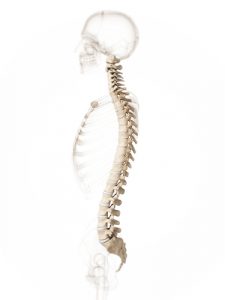Posted on November 22, 2017 by Kate Halsall
“Them bones them bones them dry bones, Them bones them bones them dry bones, Them bones them bones them dry bones, Now shake them skeleton bones”

I’m sure most of you will remember this song from your childhood! Well it got stuck in my head this weekend as I was tutoring about the skeletal system for our sister company motive8IQ. It made me realise that sometimes we really do take our body for granted, but it’s actually an amazing machine! To celebrate this fact, I’m going to spend the next few weeks in sharing some of the awesome facts about this finely integrated structure we live in!
It’s only right therefore, that I start with what provides the framework to give our bodies their basic shape – the skeleton! So here’s 8 facts about bones!
- There are 206 bones in the body (although we’re actually born with more, but some bones fuse together during growth)
- We’ve got 5 different shapes of bones:
- long bones – think shin or thigh bone
- short bones – think fingers and toes
- irregular bones – think spine
- flat bones – think shoulder blades
- “seed-like” – think knee cap
“The toe bone is connected to the foot bone, The foot bone is connected to the heel bone, The heel bone is connected to the ankle bone, The ankle bone is connected to the shin bone…..”
- Bone development is also affected by nutrition, sunlight, hormones, physical activity and exercise – not just your weight or health!
- Bones not only store minerals eg calcium, they also produce red and white blood cells
“The shin bone is connected to the knee bone, The knee bone is connected to the thigh bone, The thigh bone is connected to the hip bone, The hip bone is connected to the back bone….”
- Bones don’t stop forming until around the age of 18 for females and 20 for boys …
- …but even then they undergo a continual “remodelling” to keep them strong – all the bones are slowly replaced until they are new once every 7 years!
“The back bone is connected to the shoulder bone, The shoulder bone is connected to the neck bone, The neck bone is connected to the head bone.”
- Teeth, whilst part of the skeleton, are not classed as “bones”
- It’s our skeleton which protects our vital organs
- Skull – Brain
- Ribcage & Sternum – Lungs & Heart
- Spine – Spinal Cord
- Pelvis – Reproductive Organs
So what’s all the excitement about? Let’s face it, without our bones, we would just be a big floppy mess – like a slug or jelly fish!! On a serious note, as personal trainers we see a lot of people focus on appearance, and by that I mean how our bodies look– our muscle mass (tone) and/or our fat mass (wobbly bits) – and what we need to do to help with that. But if we don’t think about what we need to do for the underpinning system for our muscle and fat mass – our amazing skeleton – we may end up looking great, but our bones will be brittle and weak, even some simple as walking will get hard and we may get joint pain which will affect your activity levels – then what will happen to your fat mass!?!?
PS Bones aren’t actually dry – they’re actually made of living cells!

